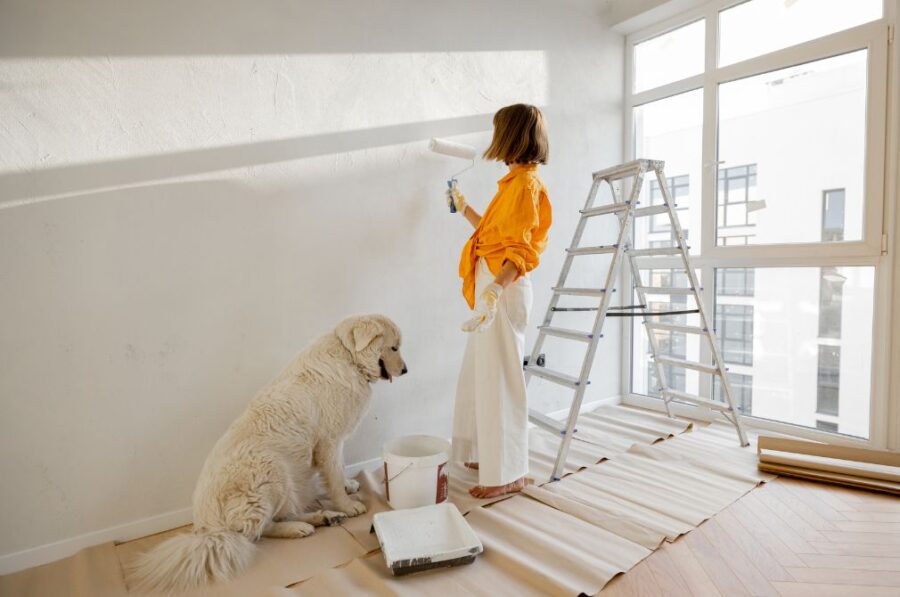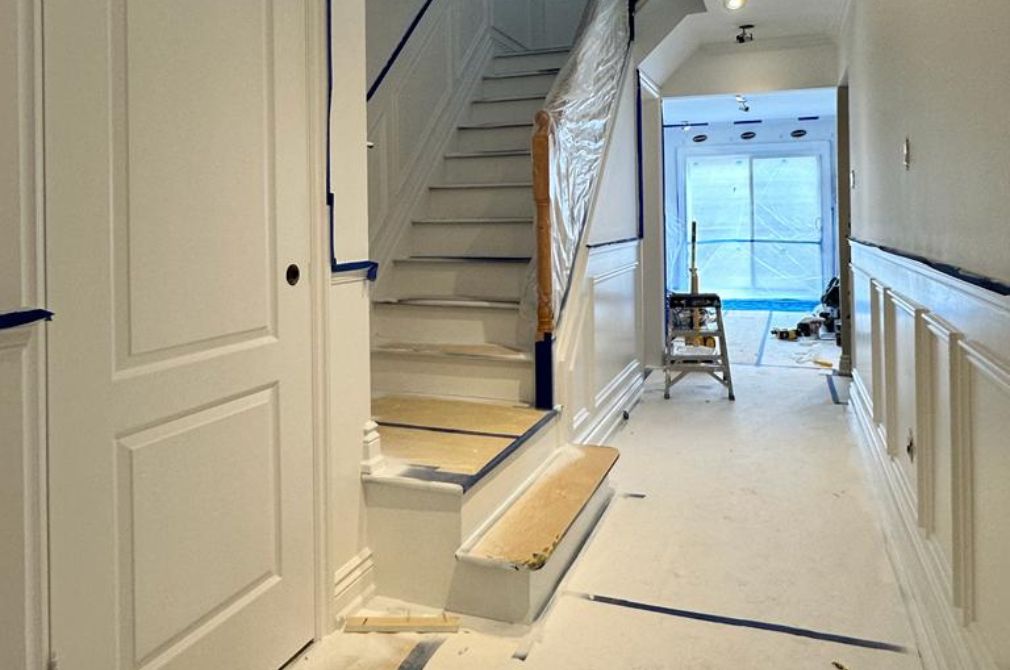When remodeling your house, painting it afresh infuses a new life into your home. But before you begin to paint your house, give a thought about your selection of paints and what it can do to your pets. Some paints can release fumes that would be harmful to your dear pets. Many times, we only think of beautification, but indeed, the fumes from paints hide many dangers associated with pets. All these risks are important to understand for a pet owner to keep their furry companions safe. Safety on your project and execution can well be guided by professional advice from interior painters to make informed choices.
What Makes Paint Fumes Dangerous?
Most of the paints, especially those containing high levels of volatile organic compounds or VOCs, release hazardous fumes during and after the application process. In the process, these VOCs evaporate into the air to form fumes that are not only odious but also perilous. In the case of humans, these fumes could even cause headaches or dizziness, while pets are more prone to illness due to their size and heightened sensitivity to such chemicals. To make matters worse, the most common VOCs present in paints are those capable of being very toxic to humans and animals. These include toluene, acetone, and formaldehyde.

Effects of House Painting Fumes on Pets
Both the increased olfactory sense and the smaller respiratory system make pets more sensitive to the chemicals in paint. Long-term exposure to these kinds of fumes may bring about a host of health problems, including:
- Respiratory Distress: The typical symptoms of pets exposed to a strong odor involve labored breathing, coughing, and sneezing.
- Gastrointestinal Problems: Pets will have vomiting, diarrhea, or loss of appetite once they have been exposed to the toxic ingredients in the paint due to swallowing or when fumes have been present for quite some time.
- Lethargy and Confusion: When ingested through toxic fume inhalation, pets may also be sluggish, lose orientation, or have drooping coordination.
- Skin Irritation: This is possible through direct contact with paint when pets touch painted surfaces and get rashes or irritation on their skin.
How to Find the Best Paint for Your Interior
Choosing the right paint goes so far beyond color selection. For pet owners, precaution is so much more important. You need to choose only those paints that are non-toxic and very low in levels of VOCs. At Encore Painting, we use Low PVC or Low VOC paints, designed to emit less fume into the atmosphere, thus putting fewer humans and pets in situations where they can be exposed to them. These low-fume paints are a safer option for pet owners and also better for the environment. Professional house painting experts will be able to guide you through selecting these products to ensure both the look and safety of your home.

How to Protect Your Pets During House Painting Projects
In order to make sure that your pets remain safe during your painting project, here are some tips to help with that:
1. Remove Pets from the Area
This should be done by keeping your pets away from the area in which painting is taking place whenever possible. This minimizes their exposure to harmful fumes and reduces the risk of accidental contact with wet paint.
2. Use Pet-Safe Paints
Use paints labeled non-toxic or low-VOC. These don’t pose any harm to the pets and won’t release harmful chemicals into the atmosphere. At Encore Painting, we only use Low PVC or Low VOC paints to ensure a safe and pet-friendly project.
3. Ensure Proper Ventilation
Proper ventilation keeps the paint fumes as low as possible. Let fresh air circulate in the room during and after your painting by opening a window, using fans, and keeping the door open. This will reduce the concentration of fumes in the room, making it a safer place for your pets.
4. Monitor Your Pet’s Behavior
Observe your pet for their behaviors in case of successive painting processes. If there is respiratory distress, confusion, or lethargy, keep your pet away from such situations and consult a veterinarian in case of prolonged symptoms.
How to Identify Fume Exposure in Pets
The signs of paint fumes in pets may not be immediately obvious; therefore, subtle changes must be kept in mind. Key symptoms to watch for are the following:
- Persistent coughing or difficulty in breathing
- Vomiting or a loss of energy
- Excessive scratching or skin irritation
- Lethargy or disorientation
If you notice any of these symptoms, it is time to remove your pet from the environment immediately and take them to a veterinarian.

Why Encore’s Low PVC Paint is a Smart Choice
Encore Painting goes the extra step to ensure that not only does your home look great but also that it’s safe for all members of your household, whether they are two-legged or four-legged. Our use of Low PVC or Low VOC paints reduces the release of harmful chemicals, thereby keeping your living space safer during and even after the painting process. By this special formulation, these paints emit limited fumes to ensure that your pets have a minimum chance of respiratory problems or other skin irritation due to the project.
How to Reach the Professionals for a Safe House Painting Experience
And when in doubt, it is always best to seek a professional. Here at Encore Painting, we understand the importance of working with safe paints and taking procedures into consideration to protect your pets and family. Allow our house painting gurus to guide you in picking out the right products and making sure your home is as beautiful as it is safe. For professional guidance and pet-friendly painting services, contact us and be certain that your project will go off without a hitch from start to finish.